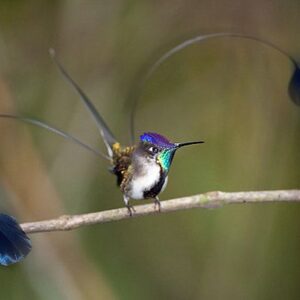This striking red avian species, reminiscent of a finch, is commonly encountered in a variety of habitats. Its habitat range includes forests, forest edges, bushy areas, as well as urban parks and gardens.
Meet the Red Pileated Finch:
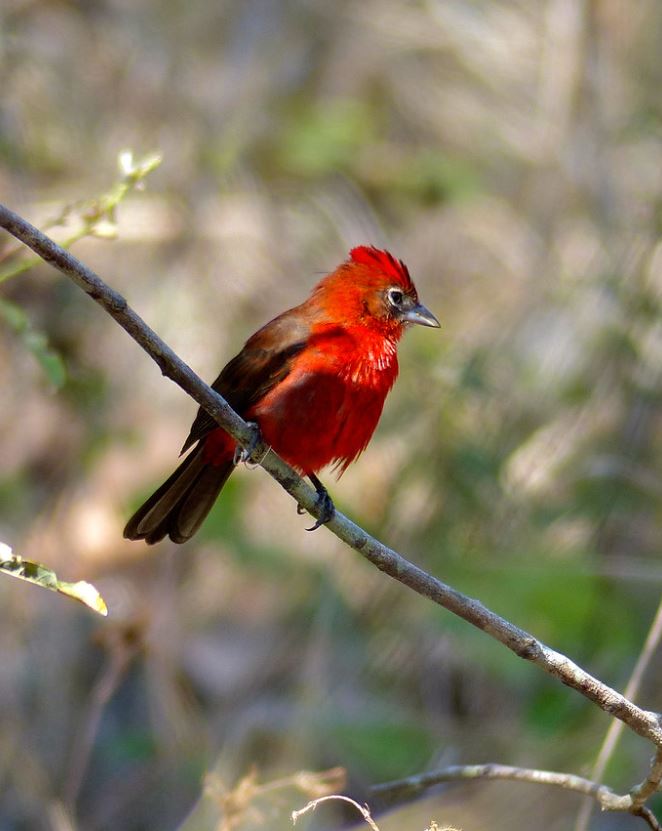
“Red-crested Finch (Coryphospingus cucullatus) male” by berniedup is licensed under CC BY-SA 2.0. (cropped)
Physical Characteristics: The Red Crested Finch (Coryphospingus cucullatus), also known as the Red Pileated-Finch, measures approximately 13.5 cm in length and boasts distinctive features. Its most striking attribute is the scarlet, bushy crest adorning its head, complemented by black stripes running along the sides. The upper plumage displays a deep vinous red hue, transitioning to a vibrant crimson down the rump. In contrast, the wings and tail exhibit browner shades. The bird’s eyes are encircled by a narrow white ring, surrounded by a brownish patch.
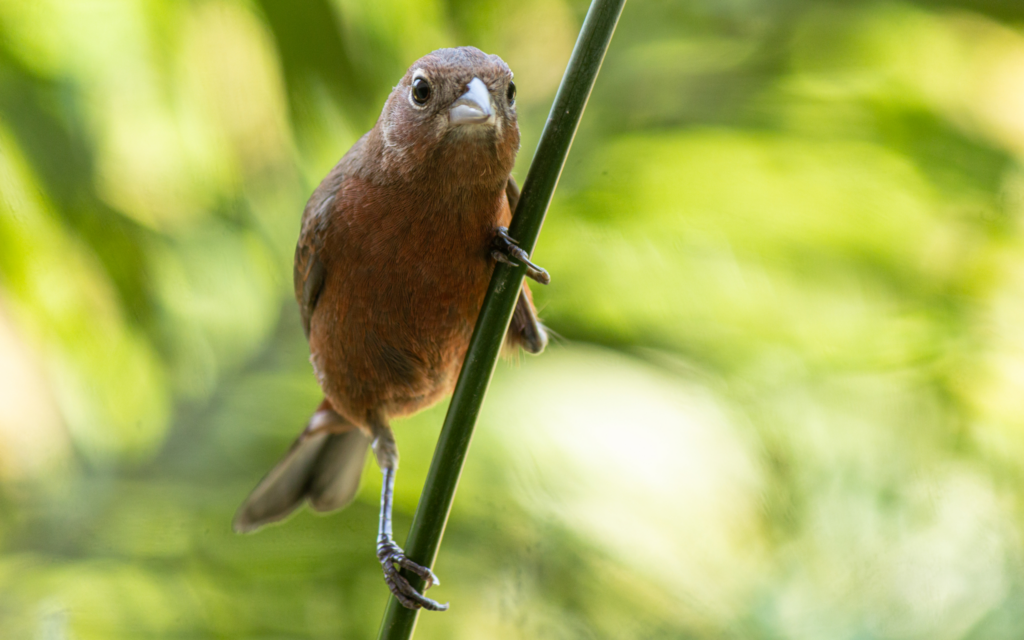
“araguira rougeâtre, red-crested finch, red pileated finch, soldadito crestirrojo, tico-tico-rei” by Denis Zabin is licensed under CC BY 4.0.
Females, while lacking the red and black crown, possess a more subdued brown plumage.
However, they still retain the crimson rump and the distinctive narrow white eye ring. Their throat appears whitish, while the area below adopts a rosy pink hue.

“araguira rougeâtre, red-crested finch, red pileated finch, soldadito crestirrojo, tico-tico-rei” by Diego Carús is marked with CC0 1.0.
Range: The Red Crested Finch inhabits regions spanning from Guyana and northeastern Brazil along the lower Amazon upriver, with more widespread distribution in the southern interior. Its territory extends southward and westward through Paraguay and Uruguay, reaching northern Argentina and eastern Bolivia. It also maintains a presence in the arid intermontane valleys of northern Peru. Typically, their habitats are situated at altitudes below 1500 m, except in the Andean valleys where they can be found at higher elevations.

“Red-crested Finch” by Wildreturn is licensed under CC BY 2.0. (cropped)
Habitat and Range: The Red Crested Finch thrives in arid scrublands, drier woodlands, and agricultural areas, where it is commonly found and locally abundant. Although it occupies semi-open and arid regions across South America, it tends to avoid populated areas. During the non-breeding season, these finches often form loose flocks, occasionally associating with other finch species.
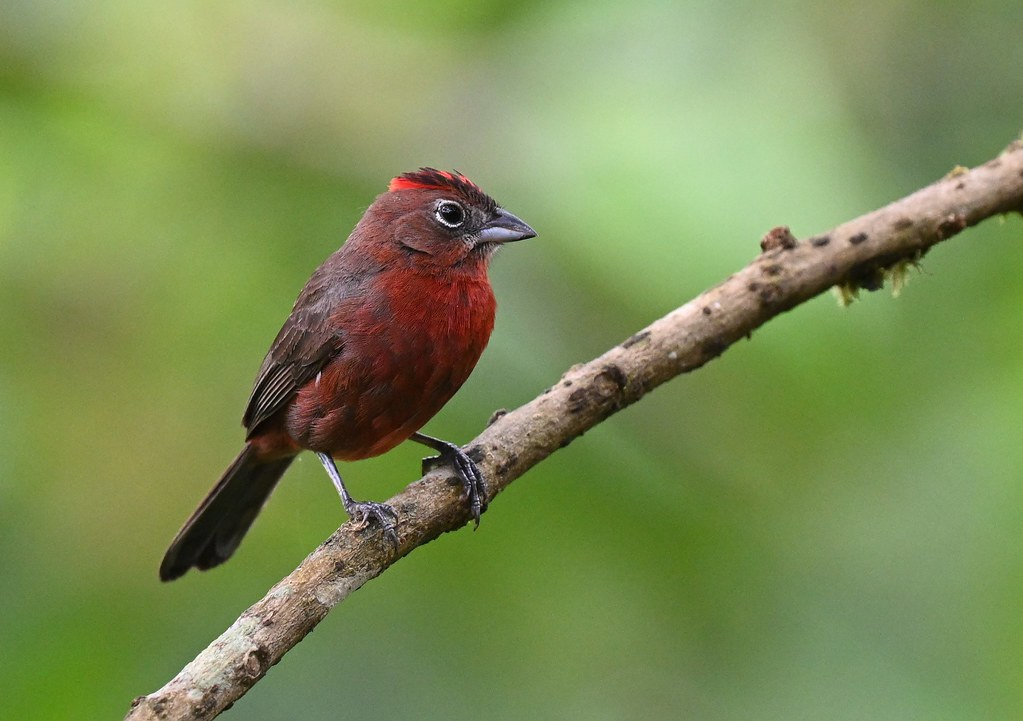
“Red-crested Finch” by Wildreturn is licensed under CC BY 2.0.
Feeding Habits: Foraging primarily on the ground, especially along grassy borders and within woodland, these finches are primarily frugivorous, feasting on locally available fruits. Additionally, they incorporate insects and other invertebrates into their diet.
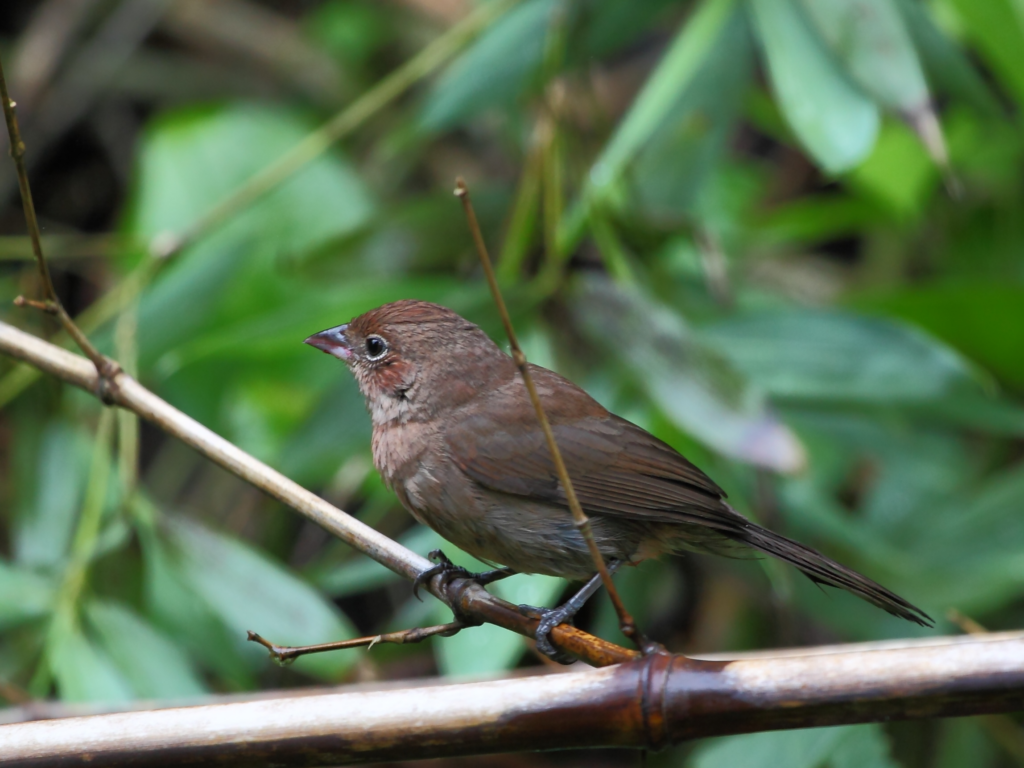
“File:Coryphospingus cucullatus – Red crested Finch (female); Restinga de Bertioga State Park, São Paulo, Brazil.jpg” by Hector Bottai is licensed under CC BY-SA 4.0.
Reproduction: Breeding Red Crested Finches raise their young with both parents playing an active role. The male feeds the fledglings after they leave the nest. Their nests, shaped like shallow cups, are constructed from plant material, fiber, and horsehair, securely fastened to the fork of a branch using a web-like substance. The female typically lays 2 white/buff-colored eggs, adorned with a wreath of brown or reddish-brown spots at the larger end.
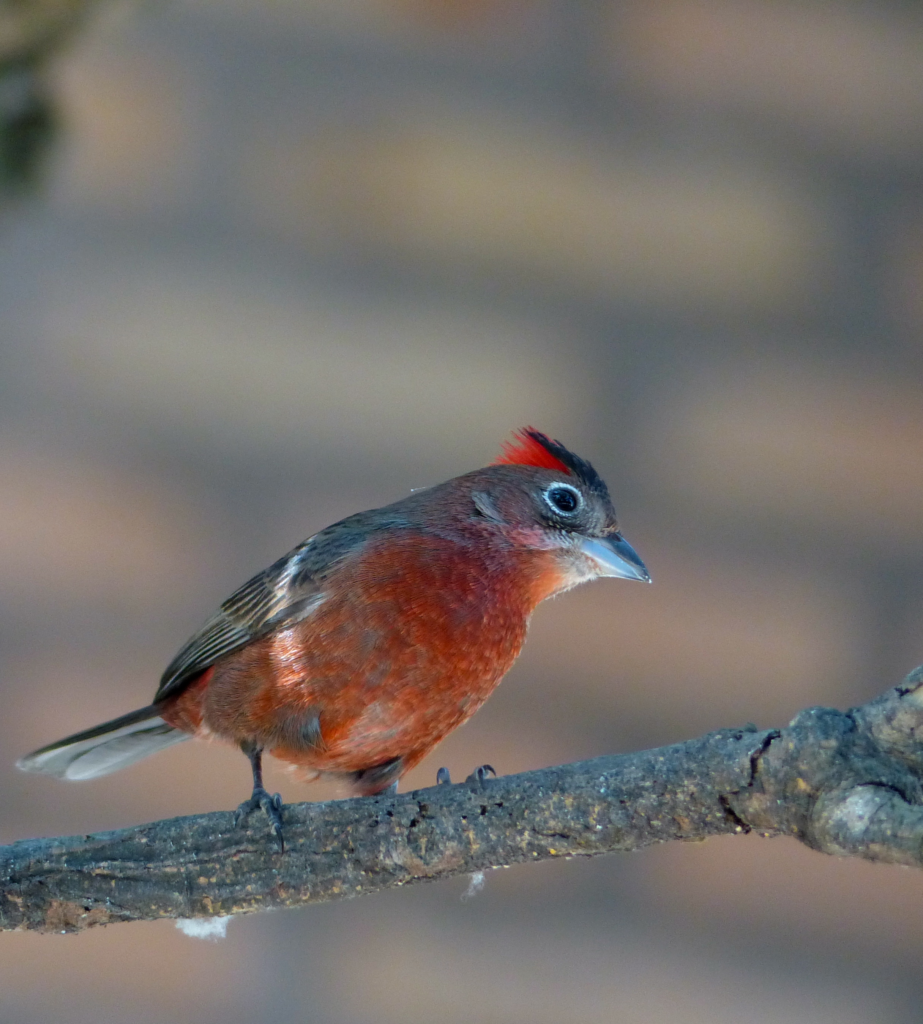
“Red-crested Finch (Coryphospingus cucullatus) male (30975133753)” by Bernard DUPONT from FRANCE is licensed under CC BY-SA 2.0.
Conservation Status: The Red Crested Finch enjoys an extremely large range, which places it beyond the Vulnerable category concerning range size. Population trends indicate stability, ruling out Vulnerable status based on the population trend criterion. Although the precise population size remains unquantified, it does not appear to approach Vulnerable criteria concerning population size. Consequently, the species is currently classified as “Least Concern.”
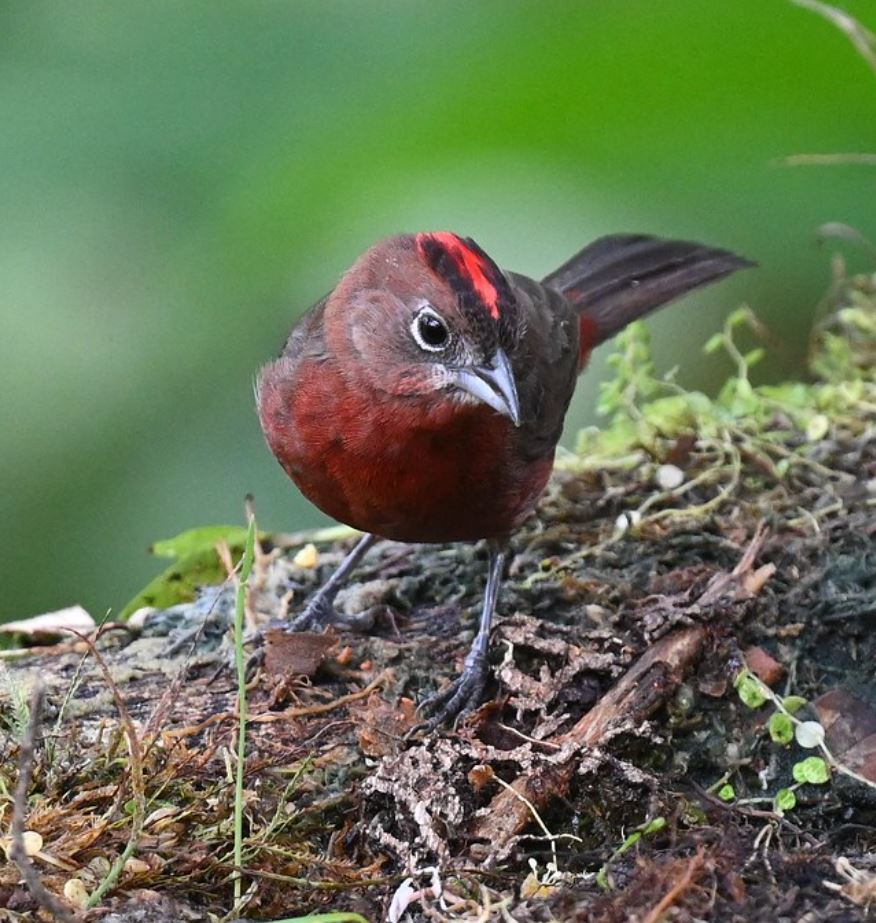
“Red-crested Finch” by Wildreturn is licensed under CC BY 2.0. (Cropped)
What’s this bird next:




